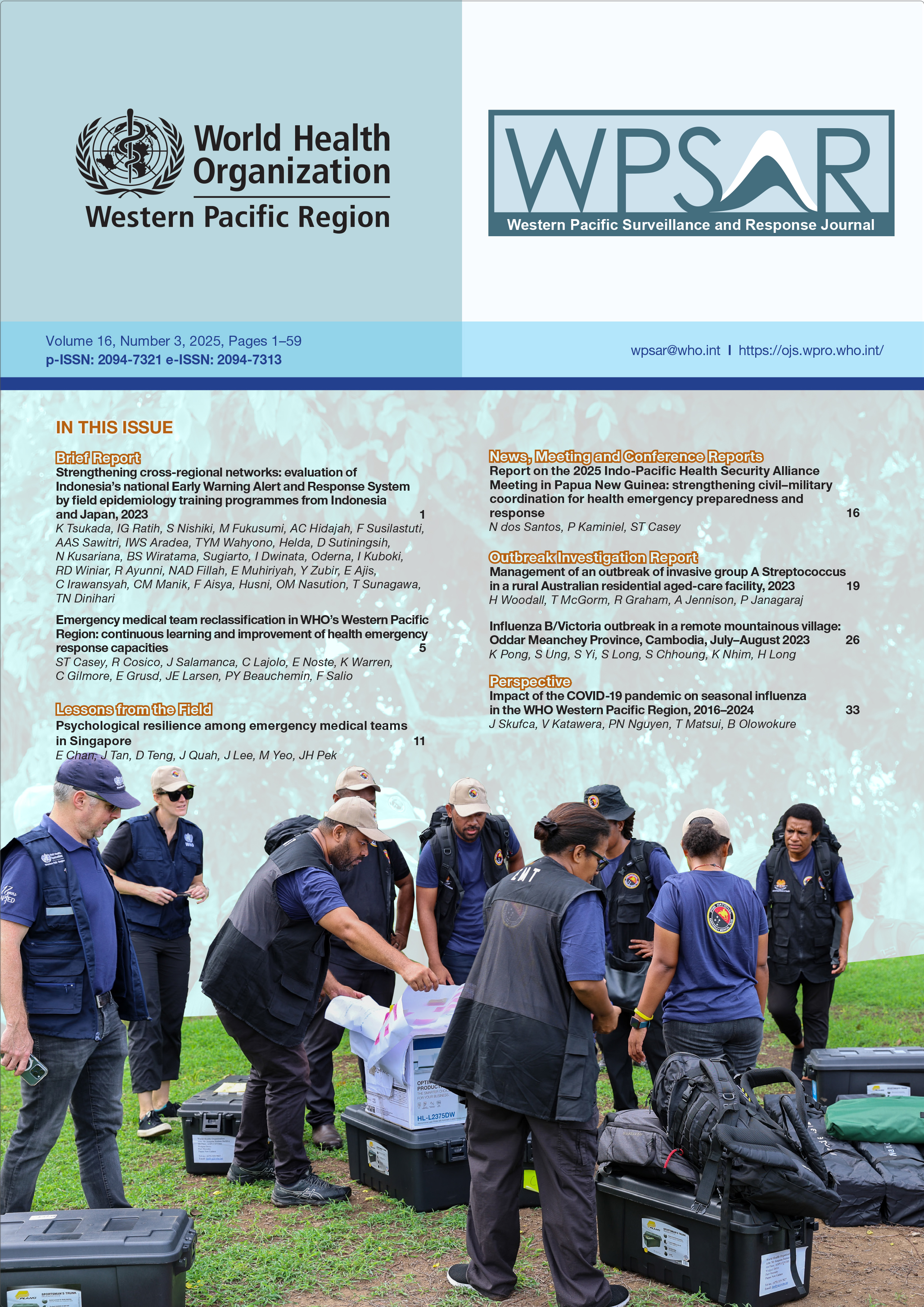Management of an outbreak of invasive group A Streptococcus in a rural Australian residential aged-care facility, 2023
DOI:
https://doi.org/10.5365/wpsar.2025.16.3.1176Keywords:
invasive group A Streptococcus, disease outbreak, aged care facility, public health managementAbstract
Objective: To outline the management of an outbreak of invasive group A Streptococcus (iGAS) in a residential aged-care facility in rural Queensland, Australia, comparing outbreak management with the newly released Australian Series of National Guidelines (SoNG) for this disease and exploring unique aspects of rural iGAS outbreak management.
Methods: An outbreak of iGAS was identified in a rural Queensland residential facility, where two cases occurred within 24 hours. A confirmed case was defined as any individual linked to the facility who had laboratory evidence of group A Streptococcus (GAS) in a sterile site. Whole genome sequencing was performed on all confirmed cases. The public health management of this outbreak was conducted according to the Queensland Communicable Disease Control guidelines and was compared with the new SoNG.
Results: A phylogenetic tree confirmed that the two samples clustered closely together with a single allele difference. Chemoprophylaxis was offered to all residents and staff in the affected part of the facility; 95% (42/44) of residents consented to chemoprophylaxis. Increased surveillance for GAS and increased facility cleaning were recommended by the public health unit. No additional cases were identified after 30 days of surveillance. Management of the outbreak largely aligned with the SoNG except for post-outbreak surveillance, which would have been extended under the new guidelines.
Discussion: This paper highlights factors unique to managing iGAS outbreaks in rural areas. Rural workforce factors and access to pathology services impact rural outbreak management, and thus involving local services and considering the local context are vital. The use of chemoprophylaxis continues to be recommended by the SoNG, and in this case was considered to be an important adjunct to other management strategies.

